
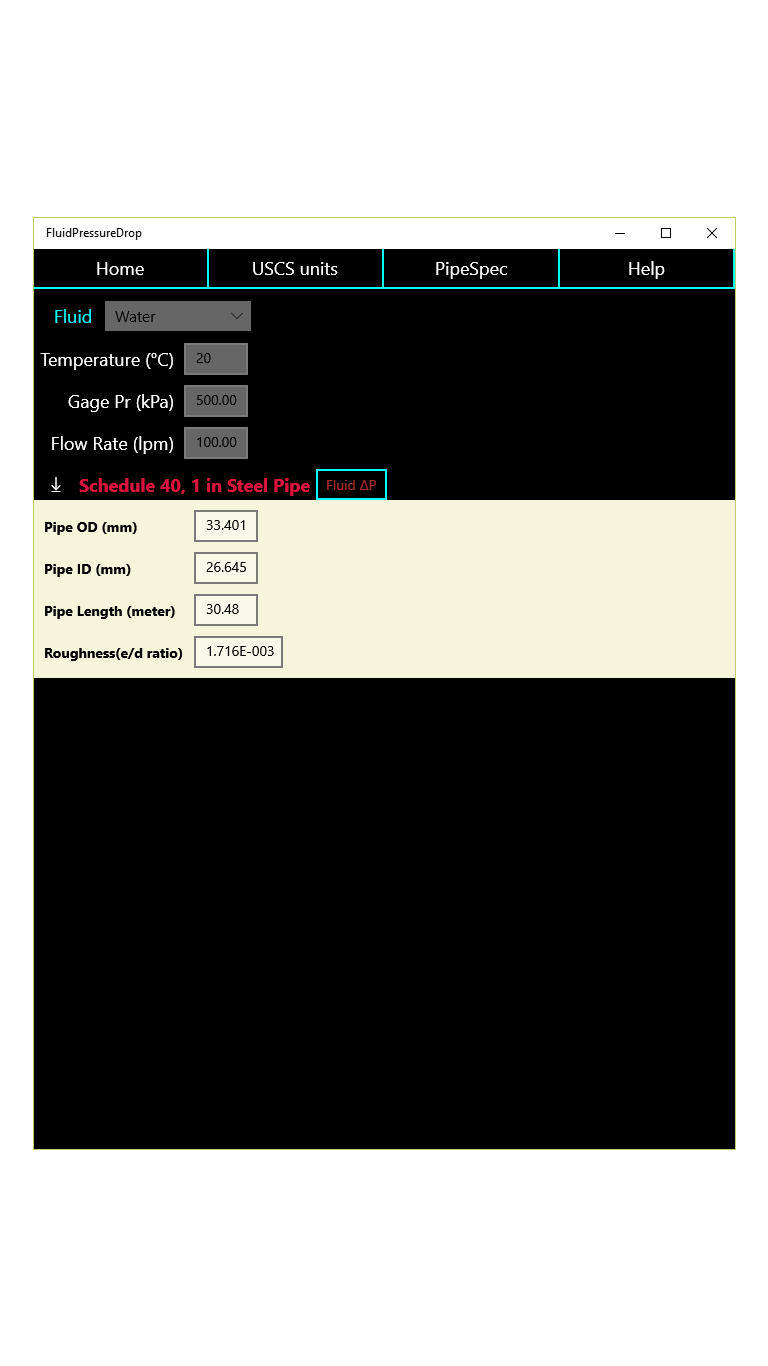
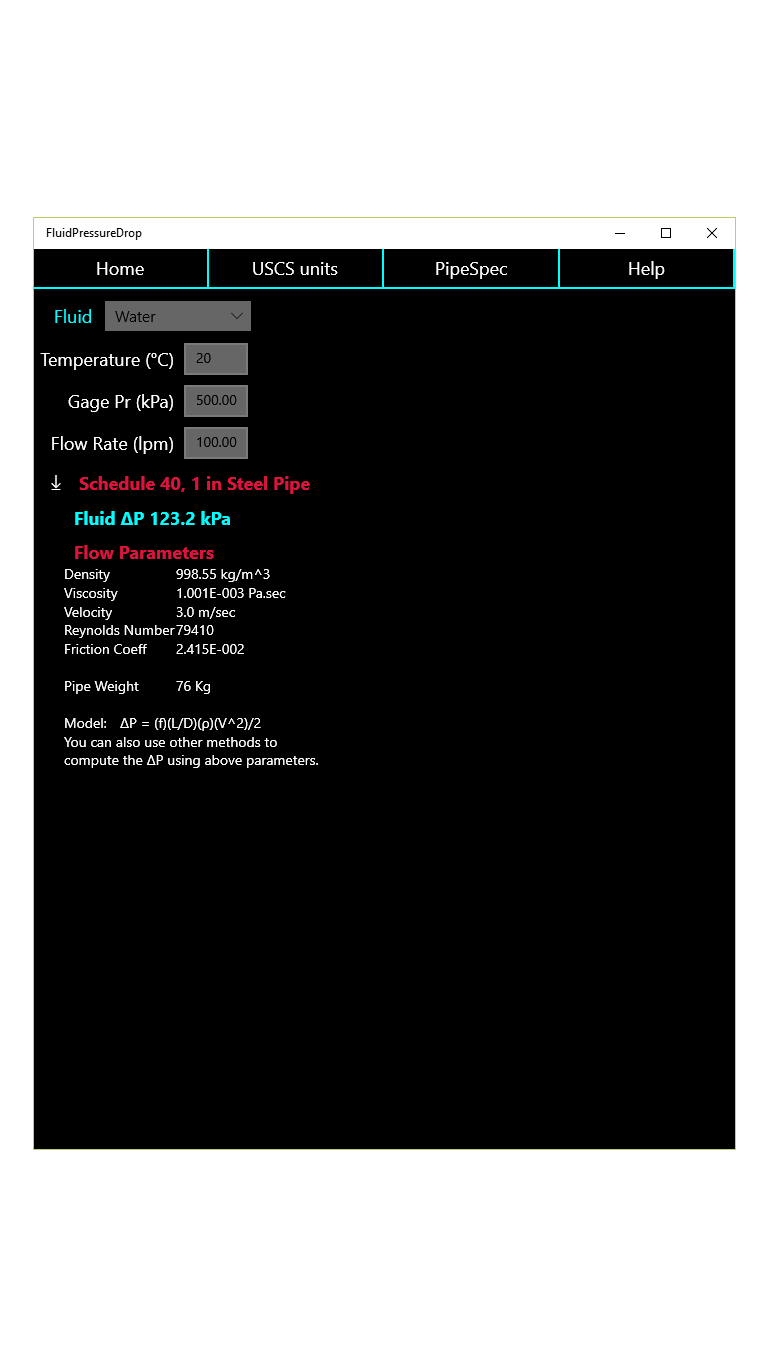
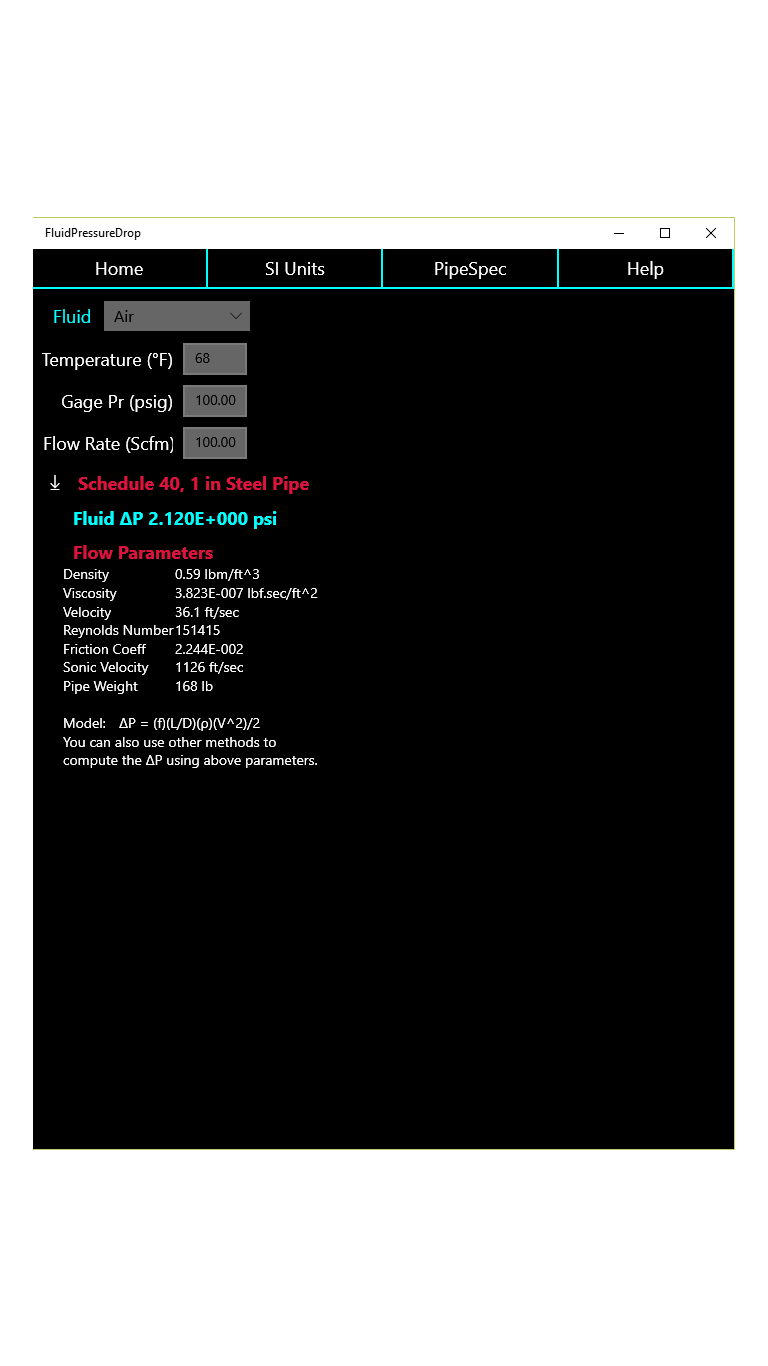

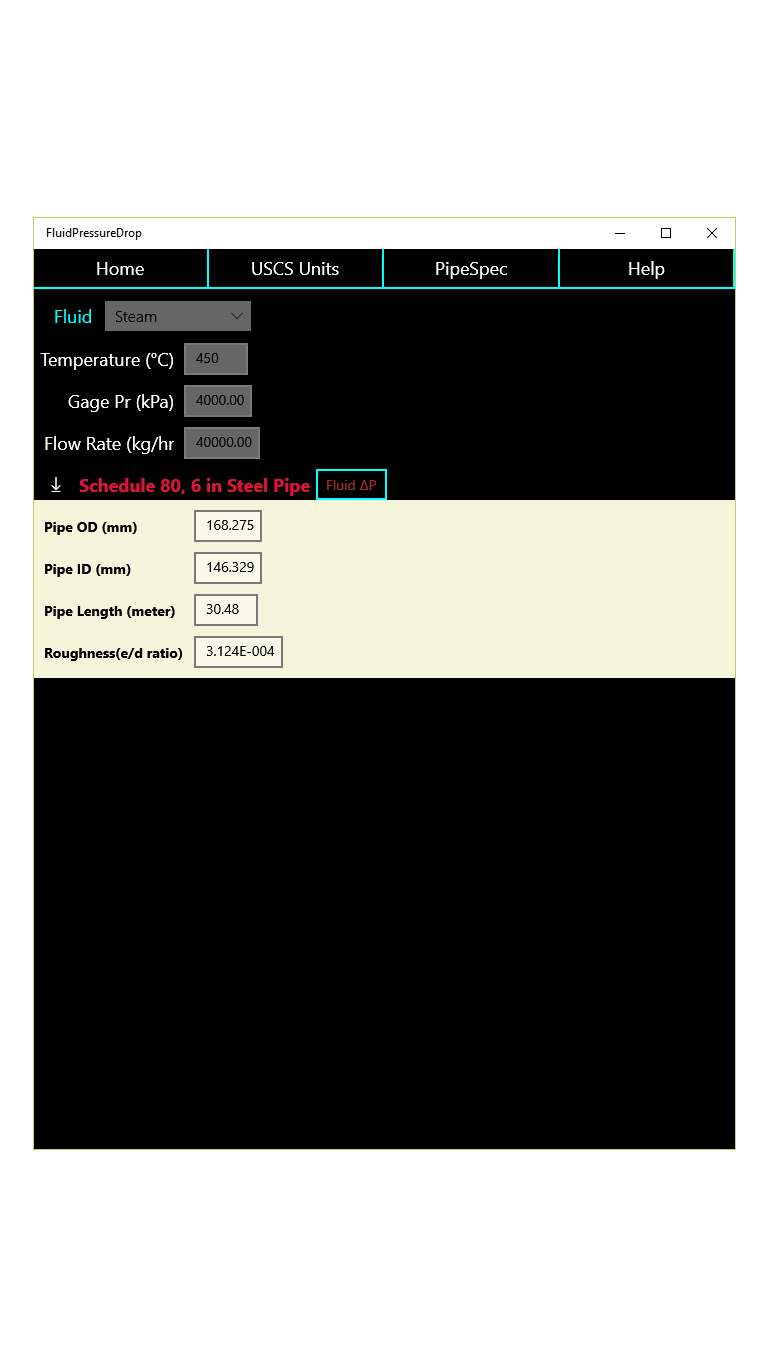
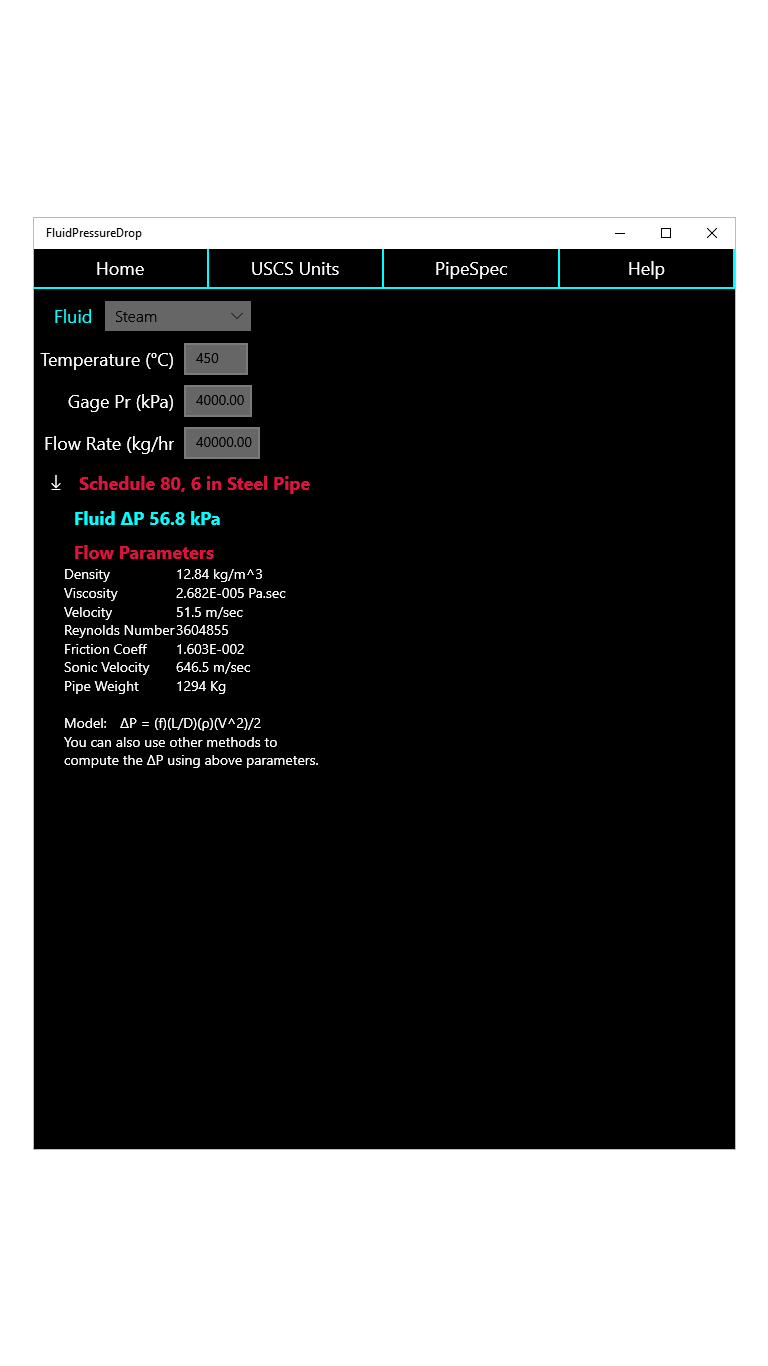
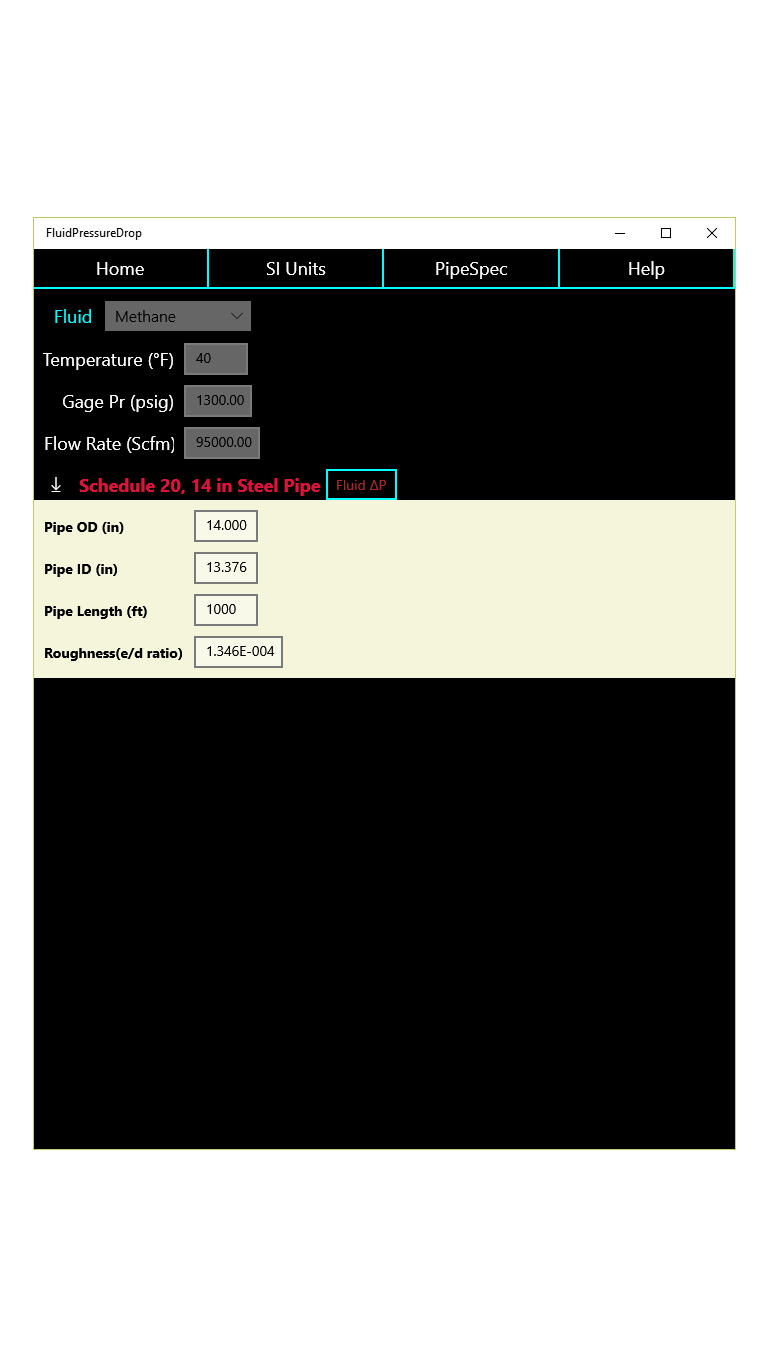
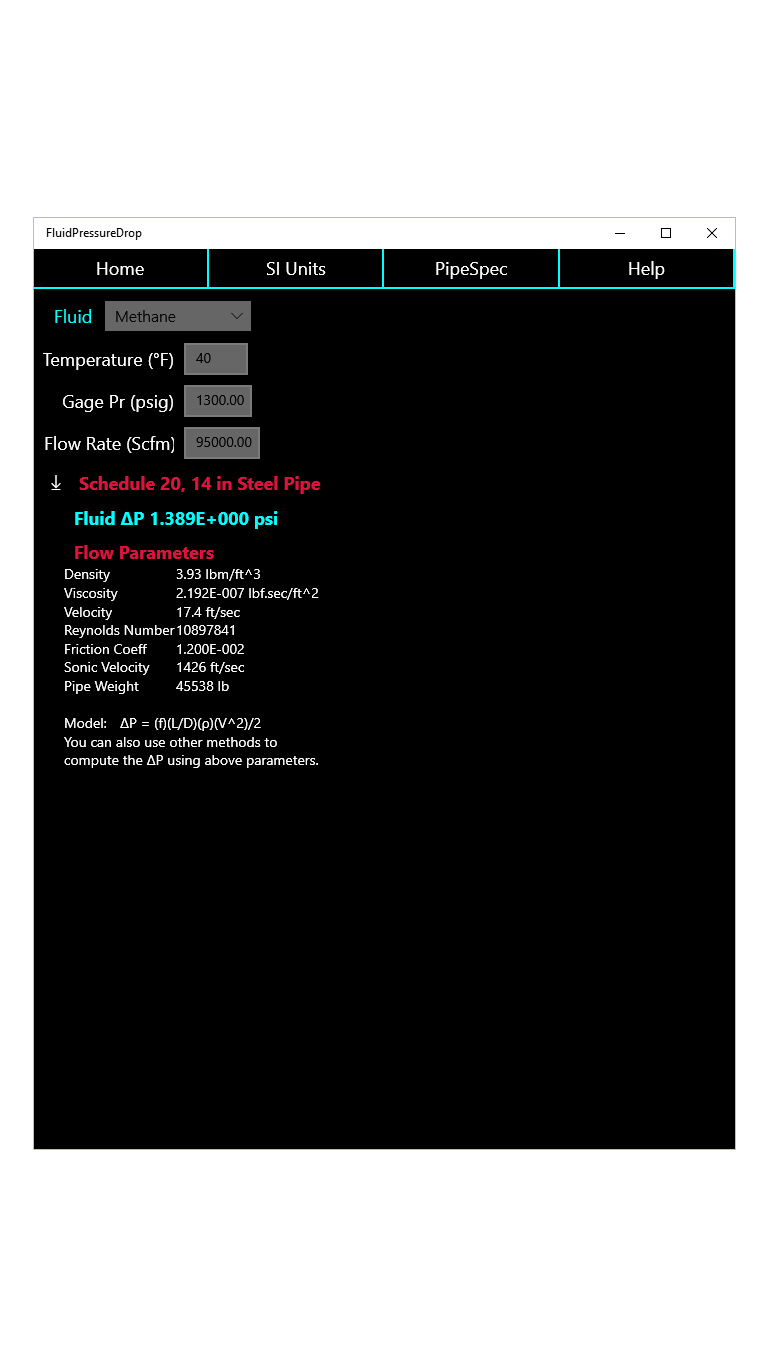
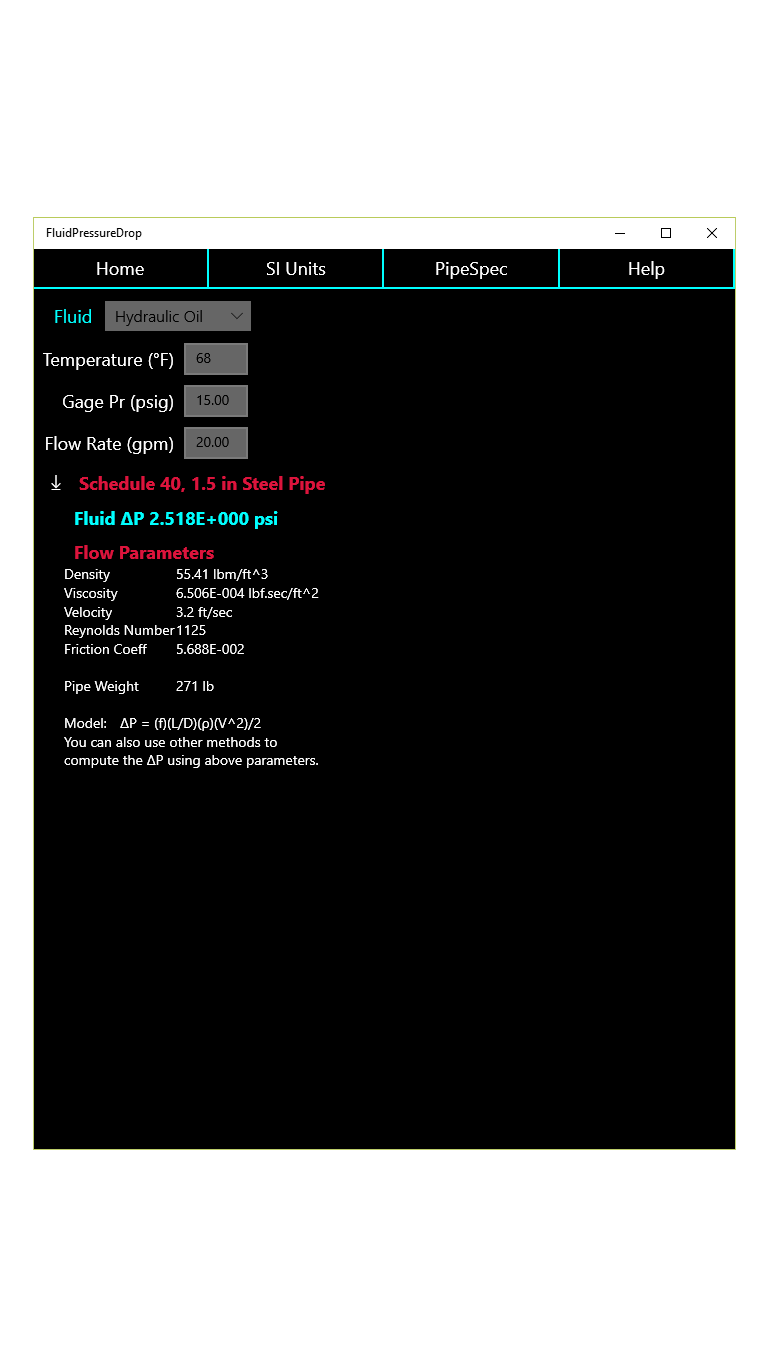
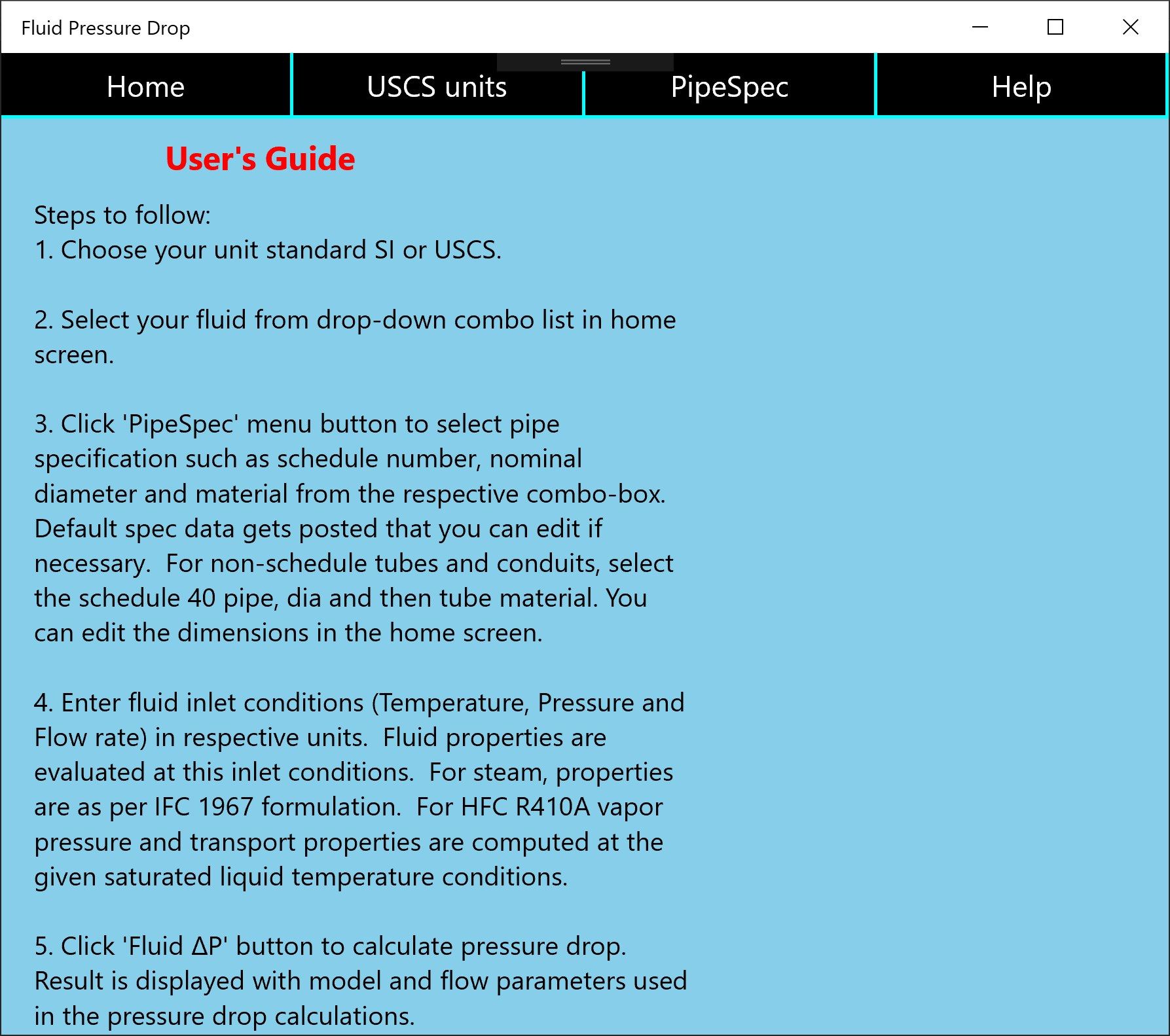
Description
Fluid Pressure Drop is for Windows 10 devices that computes pressure loss in transmission of fluids in industrial applications. Users can pick from a list of fifteen most common fluids, ten pipe schedules and sizes with twelve different material of construction to determine overall pressure loss. A judicious selection of pipe size is often a trade off between initial cost and subsequent energy cost involved in transmission of fluid from one point to another. Therefore, the app can be a helpful tool for practicing engineers and designers in analyzing different matrix.
Pressure loss is computed using Darcy’s equation, which gives a good estimate for both liquid and gases. For gases, the method is valid if the fluid velocity is within 40% of its sonic velocity. In addition, app also provides values of different flow parameters that are very useful in comparing results using other methods.
List of fluids:
Air, Steam, Water, Nitrogen, Oxygen, Hydrogen, Helium, CO2, Methane, Ethane, Chlorine, Ammonia, Argon, Hydraulic oil, HFC (410A), Mercury.
Pipe Schedules:
10, 20, 30, 40, 60, 80, 100, 120, 140, 160.
Users can pick applicable sizes under nominal diameter for which app provides the corresponding inside and outside diameter.
Material of construction:
Steel, SS, GI, CI, Concrete, Copper, Aluminum, PVC, Glass, Wood, FRP, Rubber line.
Based on the size, length and material of construction, the app gives the total weight of the pipe for trade-off analysis.
Flow Parameters:
Fluid velocity, Reynolds number and pipe friction coefficient are computed as a function of pipe size, fluid density and viscosity. App has its own algorithm to compute the coefficient of pipe friction based on roughness factor and Reynolds number under turbulent conditions and for laminar it is purely a function of Reynolds number and irrespective of pipe roughness. For more accuracy users can edit the pipe roughness factor. For gases, additional data on sonic velocity is provided for a quick reference. This would also helps in determining pressure loss using other user’s methods.
App notes enlists steps and guide lines.
Unit of Measurement:
Users can choose either SI or USCS unit standards for data input.
Help Notes:
Steps and guide lines are provided for clarification and execution of this app as shown in screen shot.
-
Computes fluid pressure drop of 15 most common fluids used in industrial applications.
-
Can select specs from ten pipe schedules and sizes with 12 material of construction.
-
Helps you determine the optimum design for transmission of fluids in industrial applications.
-
Easily edit data for non-shedule pipes and conduits.
